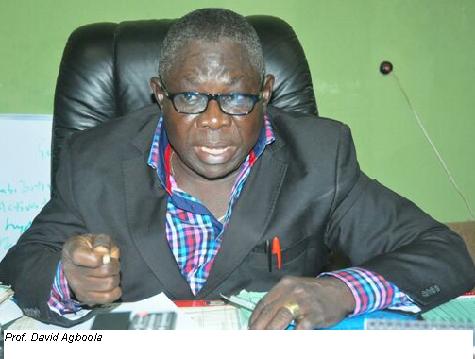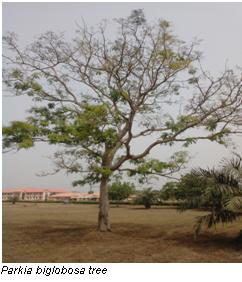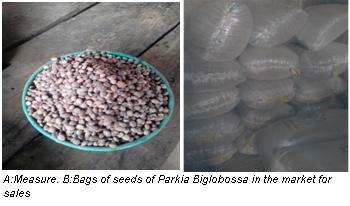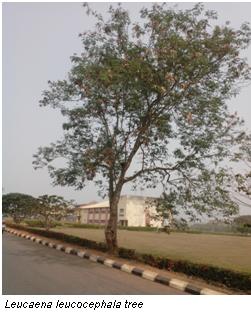To avoid desertification of forest and loss of resources in the country, special care must be given to seeds of timber and non-timber producing trees of the tropical forest and other economic trees so as to preserve them. A Professor of Botany and Plant Physiology in the University’s College of Biosciences (COLBIOS), Professor David Agboola, stated this while recounting his research findings on the problems of seed germination of Milicia excelsa (Iroko tree), Synsepalum dulcificum ‘Agbayun’ (The Miracle Fruit), Leucaena leucocephala, Ceiba pentandria (Silk Cotton tree) and Parkia Biglobosa (Locust Bean tree) Iru or Dawadawa (a local spice).

According to the University Don, he developed the interest for these trees, as a small boy growing up around his grandfather’s farm in his home town, Fiditi, near Oyo in Oyo State, which is the wet part of the Guinea Savanna, as he wanted to know more about these economic trees; how they were grown and what they were used for, adding that from time-to-time, he would observe how big lorries were loading woods of different trees and that one particular lorry could not carry the woods from a tree. His interest grew further, when he noticed that his grandfather guarded some of these trees very jealously and would not allow any forester to fell any of them, particularly, his Iroko tree, adding that his curiosity and the fact that he grew up in the farm, made him to study Botany instead of Zoology, which he had wanted to study.
Professor Agboola, who is also the Dean of COLBIOS, said that when he was starting his research, he went to the Forest Research Institute of Nigeria (FRIN), Ibadan to see which of these seeds have problems, so that he could work on them, adding that he started with nine and later narrowed it to about six tree species. While working on the Iroko tree (Milicia excels), which he described as a large deciduous tree found in the rain forest and forest out-liners, in the savanna woodland areas that is widely known for its excellent timber, he found out that the problems confronting the germination of seeds and survival of the seedling of Millica excelsa include those of germination inhibitors, light requirement and insect attack.
He noted that the seeds have been found to be photo-plastic and in general, the germination of the seeds depended on the maintenance of a certain balance between growth inhibitors and growth promoters in the seeds. For conservation and sustainability, he said he oriented and treated the seeds, noting that without proper orientation, the seeds might be buried in the ground for years and they would not germinate. In addition, he said he studied Synsepalum dulcificum (‘Agbayun’); The Miracle Fruit, known as the most strange tropical fruits, which suddenly changes the taste-bud to be sweet after consumption, so that if lemon or other sour food is eaten immediately after the miracle fruit, the sour tastes again becomes sweet, as if sugar had been added. He noted that the fruit has a unique taste changing glycoprotein that inhibits the taste buds’ perception of sour taste and the sweet sensation lasts for about half-an-hour to a few hours. Professor Agboola said that there are two known species that carry miracle fruits; Synsepalum dulcificum with smaller-leaf version (with narrow leaves) and is somewhat slower growing plant, as well as Synsepalum subcordatum (Giant Miracle Fruit), which is a larger leaf variety that grows into a small tree.

The fruit is slightly bigger than those of Synsepalum dulcificum and is produced more profusely, especially in the first years with age while the fruit crop amount of these two species become about the same. He added that the plant starts fruiting when it is only one metre tall, produces fruit practically all-year-round, noting that in its native habitat, two large crops regimes are available after the rainy season. The mature trees bushes usually have few fruits hanging around all-year, adding that the seed produces fruits between two to three years and flowers around 30 to 45 days. The Professor of Botany said that for the ‘miracle’ tree to grow well, it must be planted under moist condition and shade, adding that the seed, being recalcitrant, dies after two to three days, after harvest.
According to him, its high economic value is in the medical and food industries, since it can help diabetics to eat sweet food without taking sugar. He also added that he had worked on another economic tree known as Parkia biglobosa, whose fruit or pod is the most widely-used and economically-important part of the tree, noting that its first fruits come after eight to ten years with about 20 to 25 pods, which grows from a single capitulum. The Don added that P. Biglobosa’s obvious usefulness include making of Dawadawa or Iru (a traditional spice), traditional medicines, glaze for ceramic pots, animal fodder, the stem and branches for firewood, charcoal, checking soil erosion and providing shade, as well as nutrient recycling.

Professor Agboola further disclosed that in the course of his study, it was clear that the hard seed coat or testa prevents seed germination. Germination of the seed occurs after the seed coat becomes permeable, saying that natural germination could occur from prolonged contact with water, chewing or ruminating by animals, mechanically-scarifying the seed coat and other things that could break the seed coat. To propagate seedlings, the seed coat could be pretreated in various ways to encourage germination by soaking seeds in hot water, treating seeds for up to 15 minutes with Sulphuric or Nitric Acid; all produced for good germination rates.
According to him, his work titled, “Effects of Orientation on Seed Germination”, won an award in India, noting that he painstakingly showed how to avoid dormancy problems in seed, how they could be treated and the right way to position the seed while planting, adding that seeds often do better when planted horizontally. The Dean disclosed that he also studied Ceiba pentandria, the silk cotton tree, which is mostly found in the Low-land Rain Forest and the Guinea Savanna zones. He added that in Nigeria, the tree produces a white wood useful in building industry and light furniture and silk cotton for stuffing pillows, upholstery, teddy bears, a good source of fertilizer and its oil for soap and paint production.
Additionally, he said he had studied Leucaena leucocephala, which is an exotic species introduced into Nigeria from South-East Asia. An important characteristic of the plant is its multiple uses in agricultural and forest-related production system and as a supplier of coal and firewood. It can also be used as forage, green manure, biomass production and snacks for human consumption. However, Professor Agboola noted that most of these trees were susceptible to insect infestations and were easily uprooted by rain and wind while clearing and burning of bushes, adding that with proper orientation and monitoring of the seeds and their growth, researchers had been able to increase their survival and availability.
Speaking on the importance of this research to mankind, Professor Agboola said that all the trees he had worked on had been quite beneficial to man as they serve as timber for building, making strong canoe, farm tools, wood slippers, erosion control, helping to check desertification in the country, recycling of nutrients in the soil by serving as a source of revenue and helping to reduce ecological problems. He highlighted some of the achievements recorded in his research to include getting solutions to solve some of the problem facing economic plant, adding that he had been able to replicate himself through his students and had produced good lecturers locally and in foreign countries.

The Dean lamented that despite the milestones recorded in his research, there were still many challenges facing the study such as funding, adding that there were not enough grants like those of their counterparts in South Africa, stating that there were little or no instruments, not enough manpower as many people do not seem to want to venture into the area of Botany but would rather go to other money-spinning disciplines. He further added that research in Nigeria had a lot of problems such as: funding not being readily available and the breakthroughs achieved dying under custody, noting that the government was too centralised with a lot of corruption cases without adequate checks and balances, whenever funds were released by ensuring that they get to farmers and other genuine recipients.
Professor Agboola also recommended that the government should ensure that the funds go directly to the universities for proper monitoring, saying that the Tertiary Education Trust Fund (TETFund) and Direct Teaching and Laboratory Cost (DTLC) should cater for equipment in the laboratory with monitoring team and less middlemen. He commended TETFund for its interventions, noting that such successes lie in the fact that there were not much intermediaries. The award-winning researcher advised upcoming researchers to see the future as bright, adding that they should not be afraid but rather know that hardwork pays, charging them to always remain focused.
Last Updated on January 24, 2017 by admin
